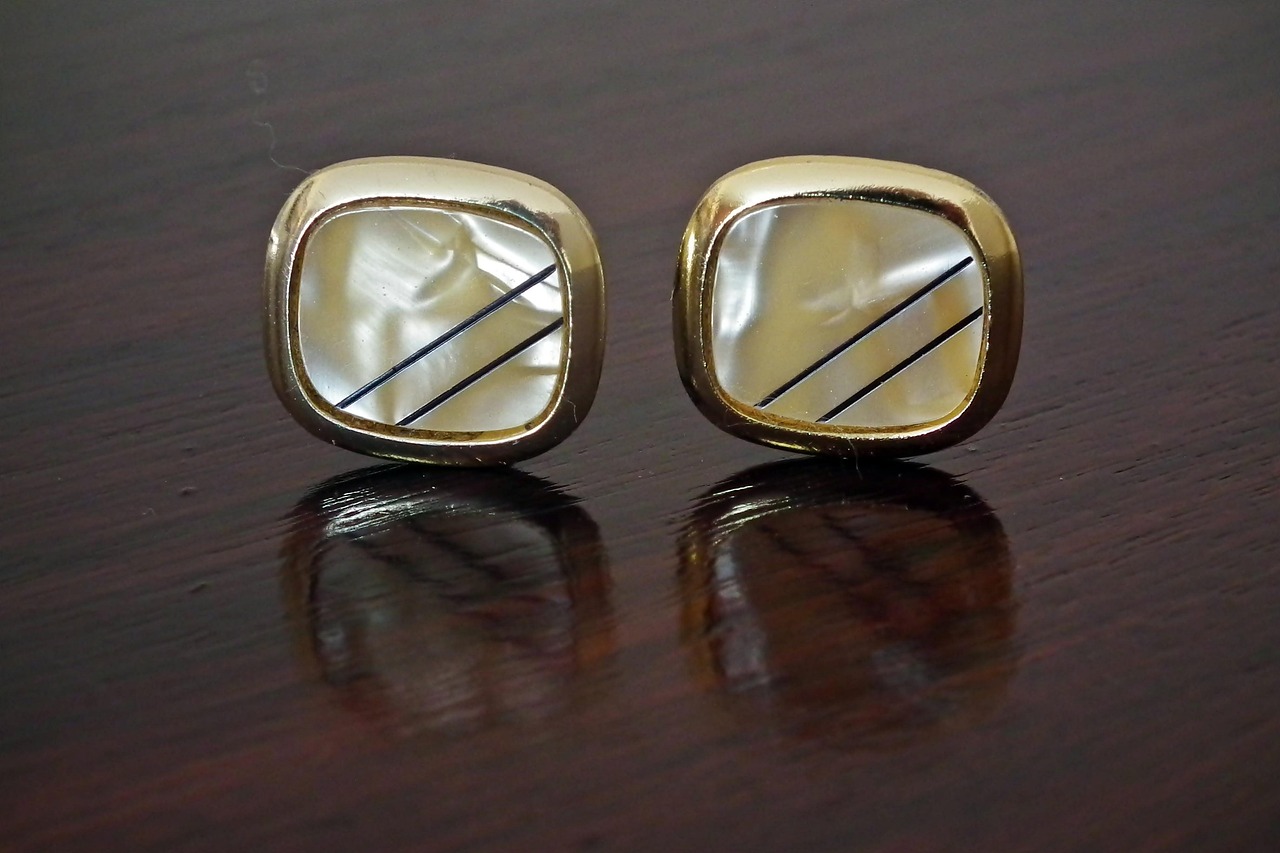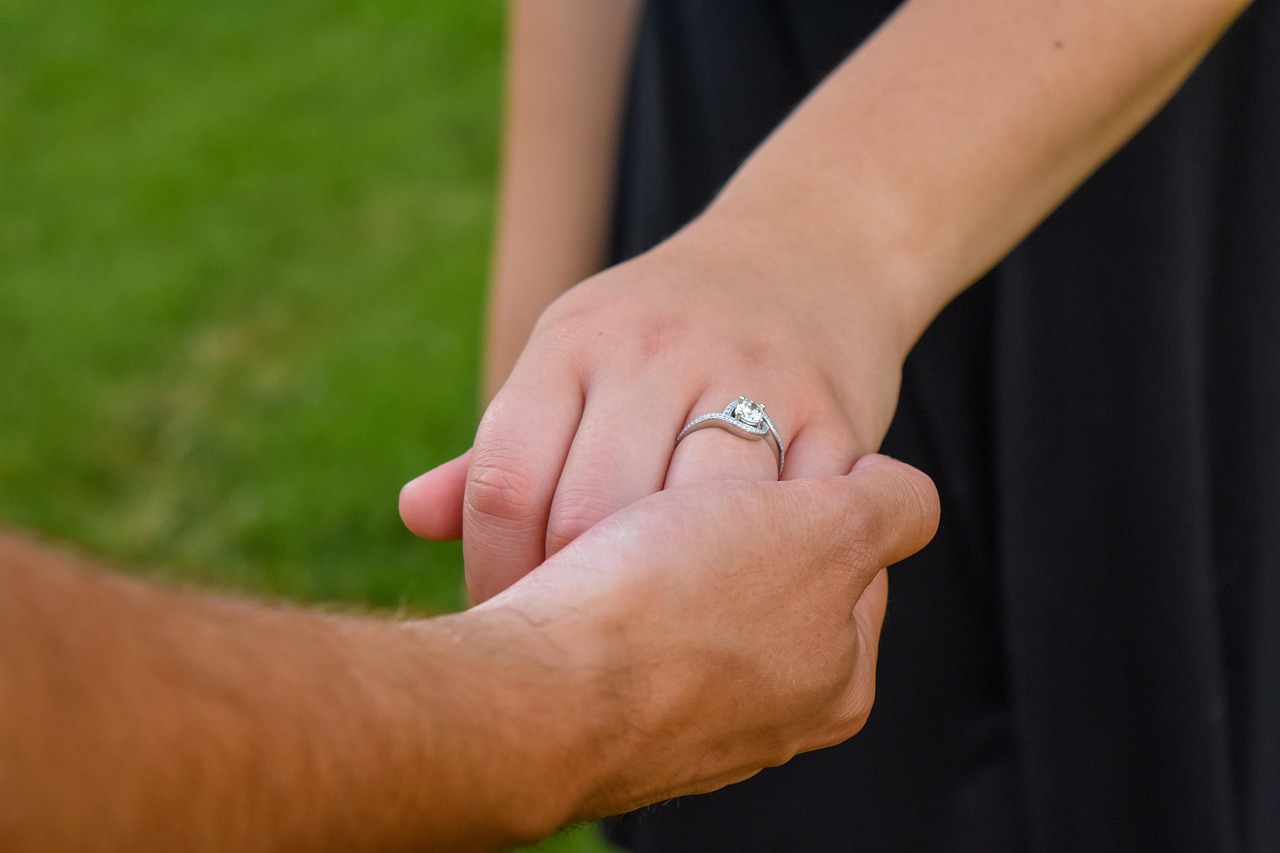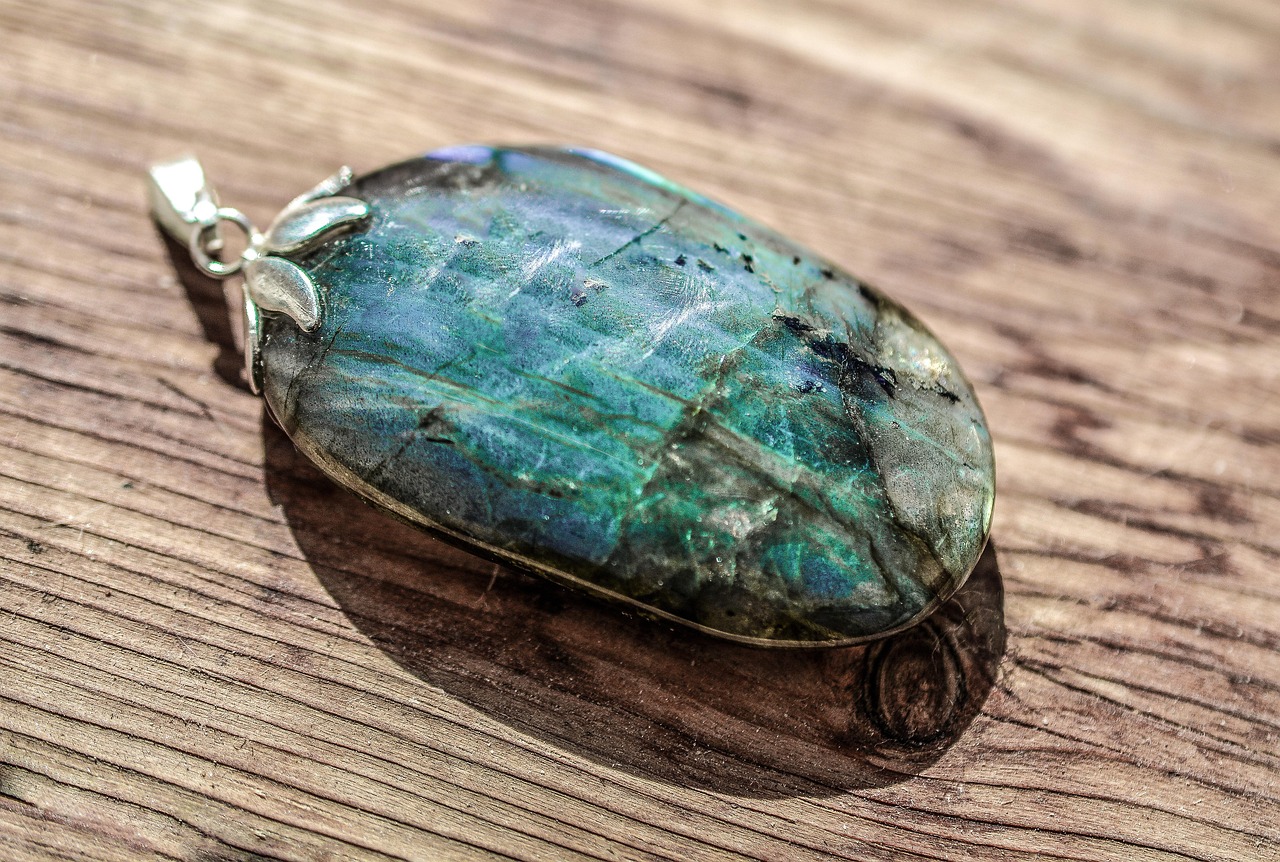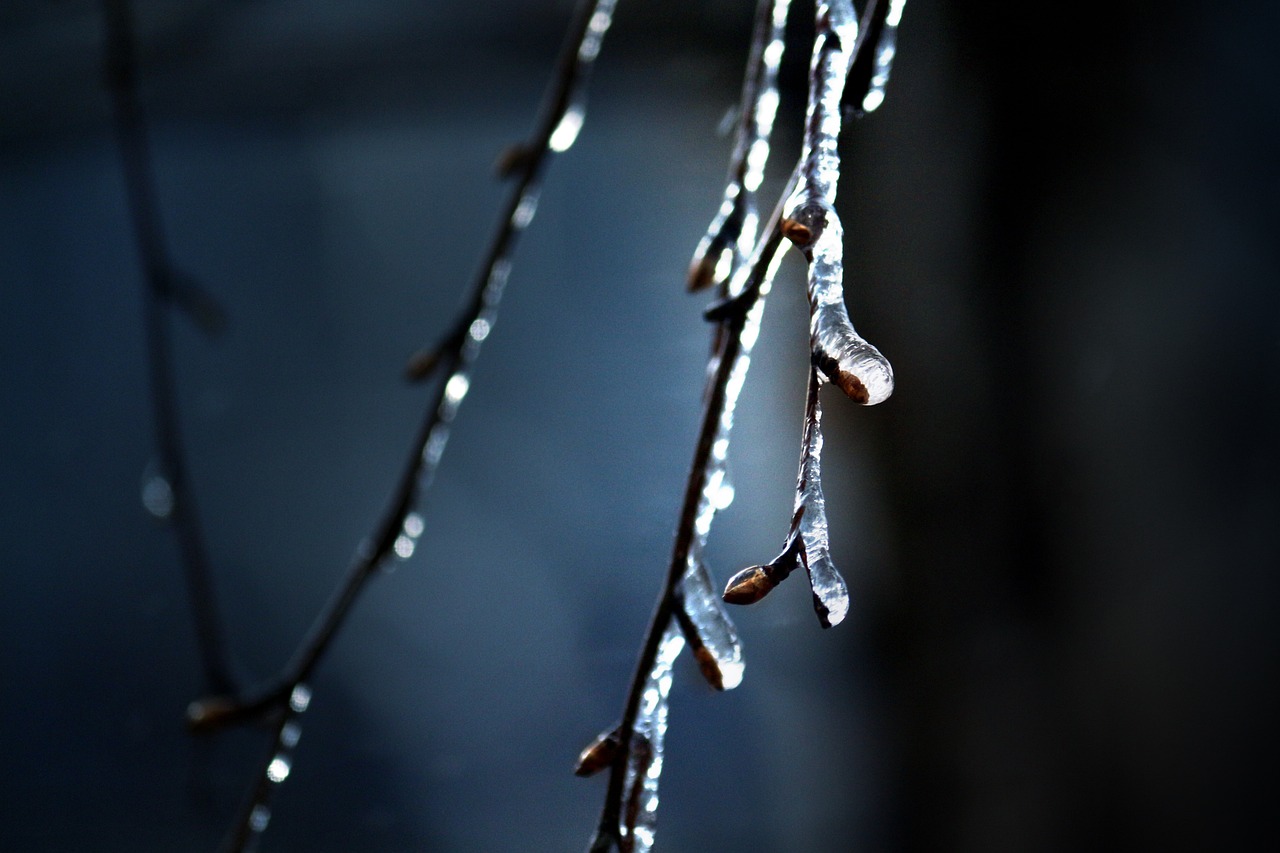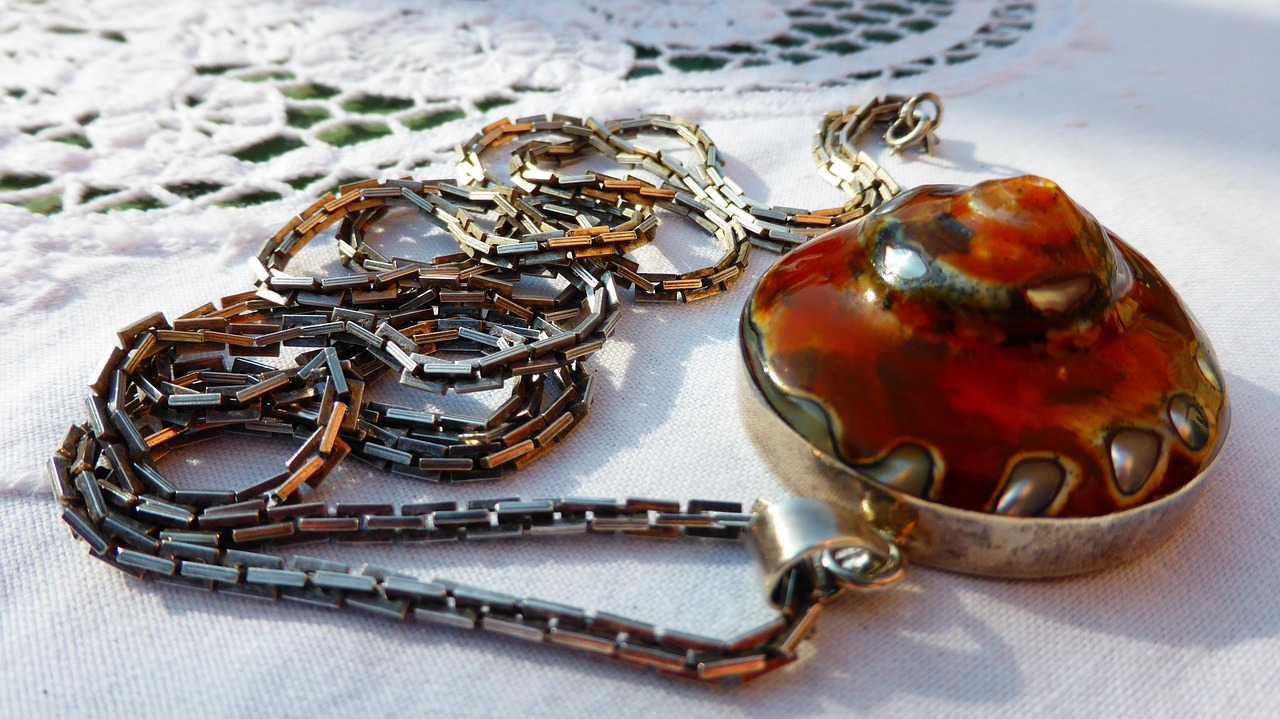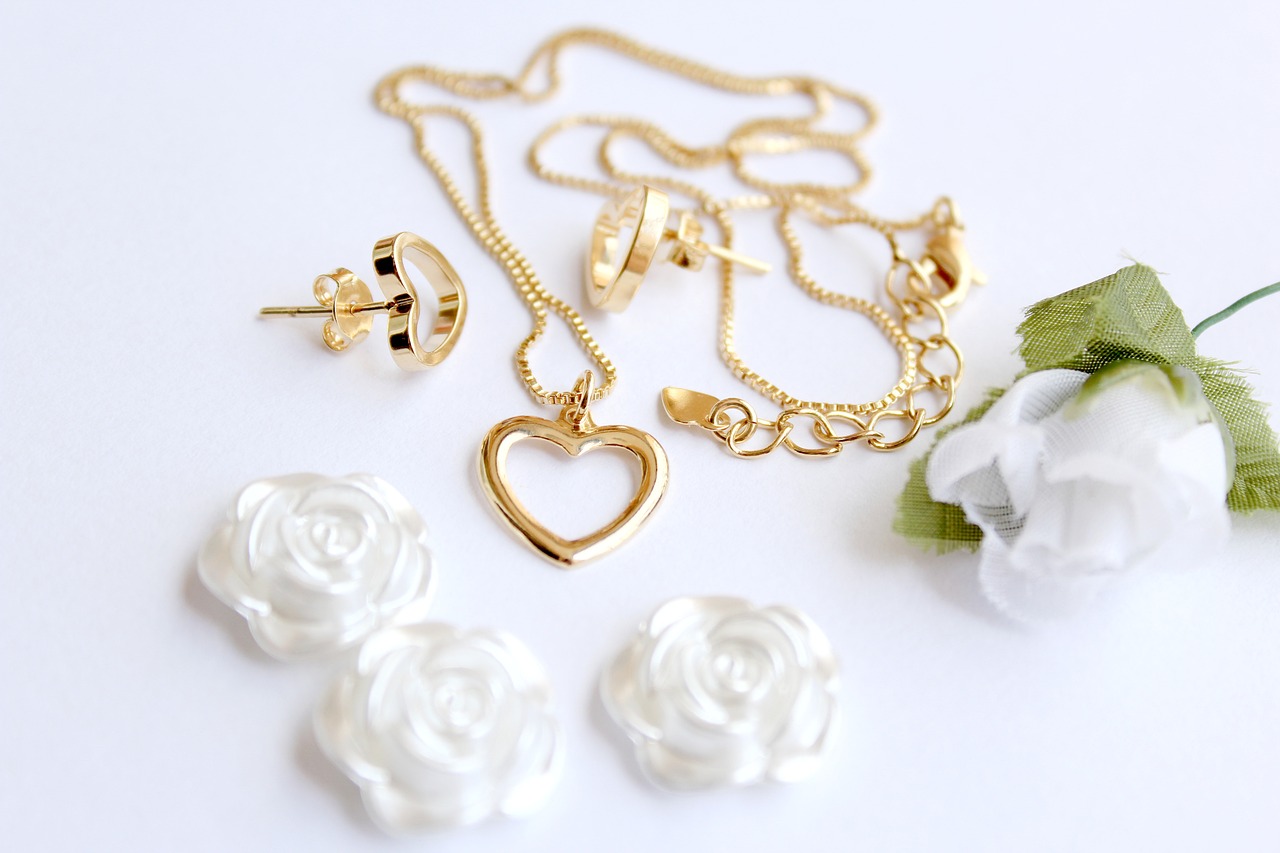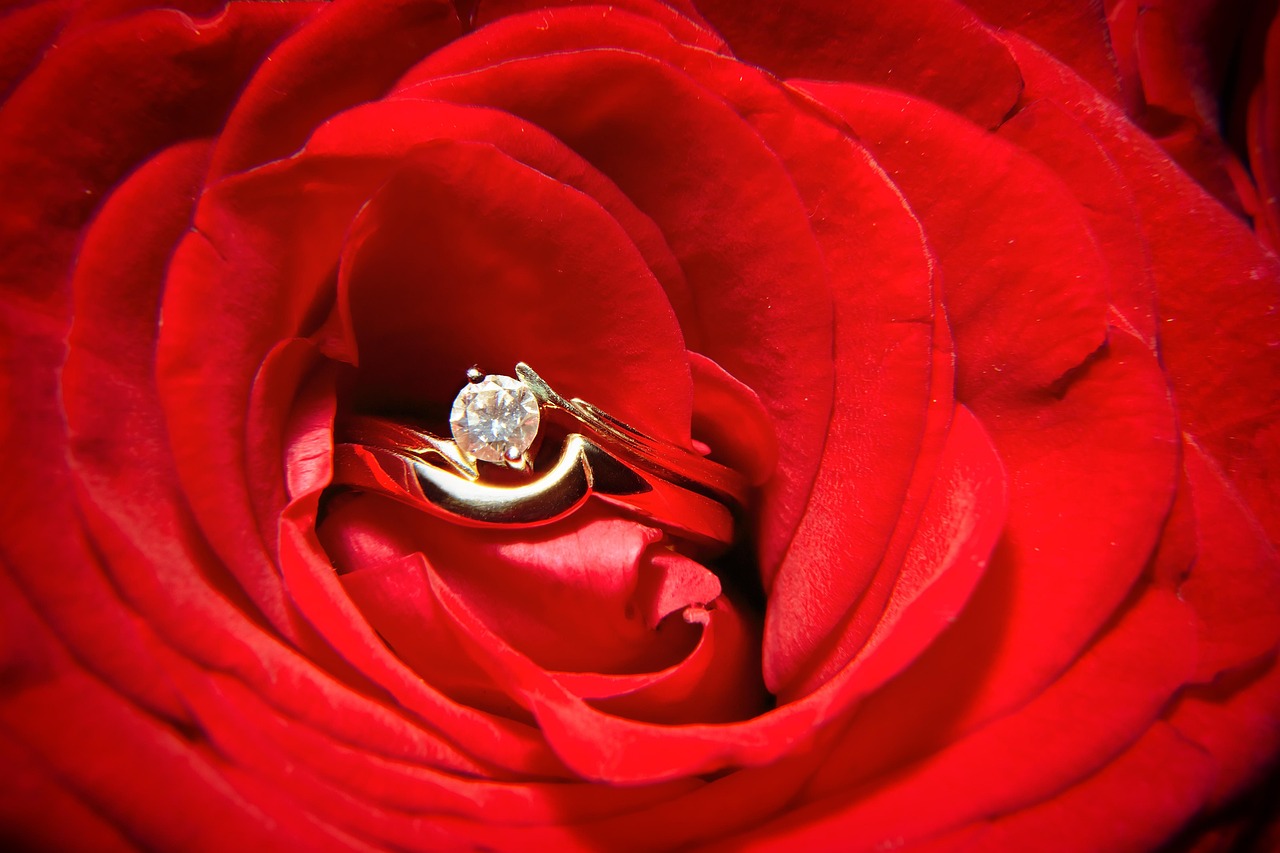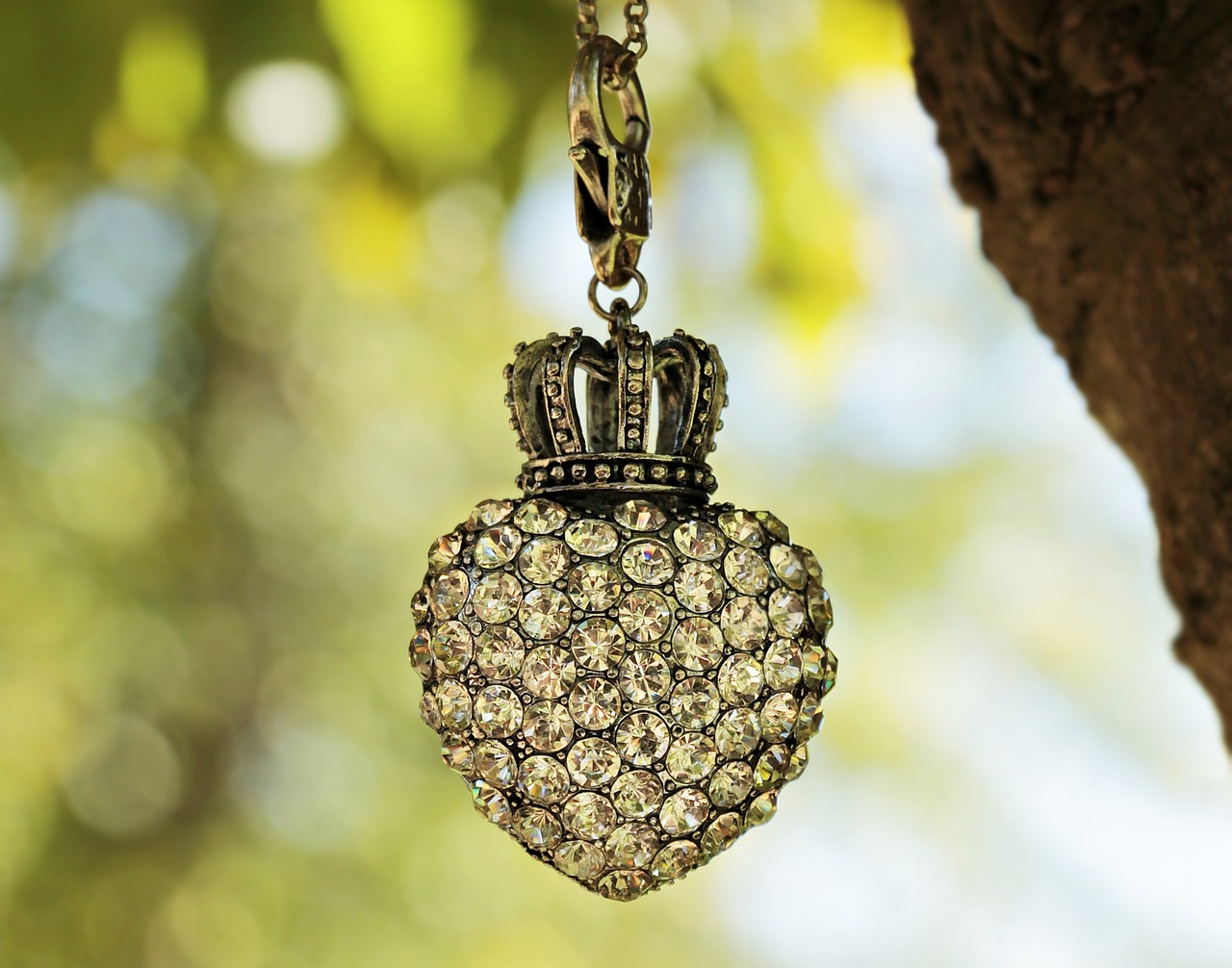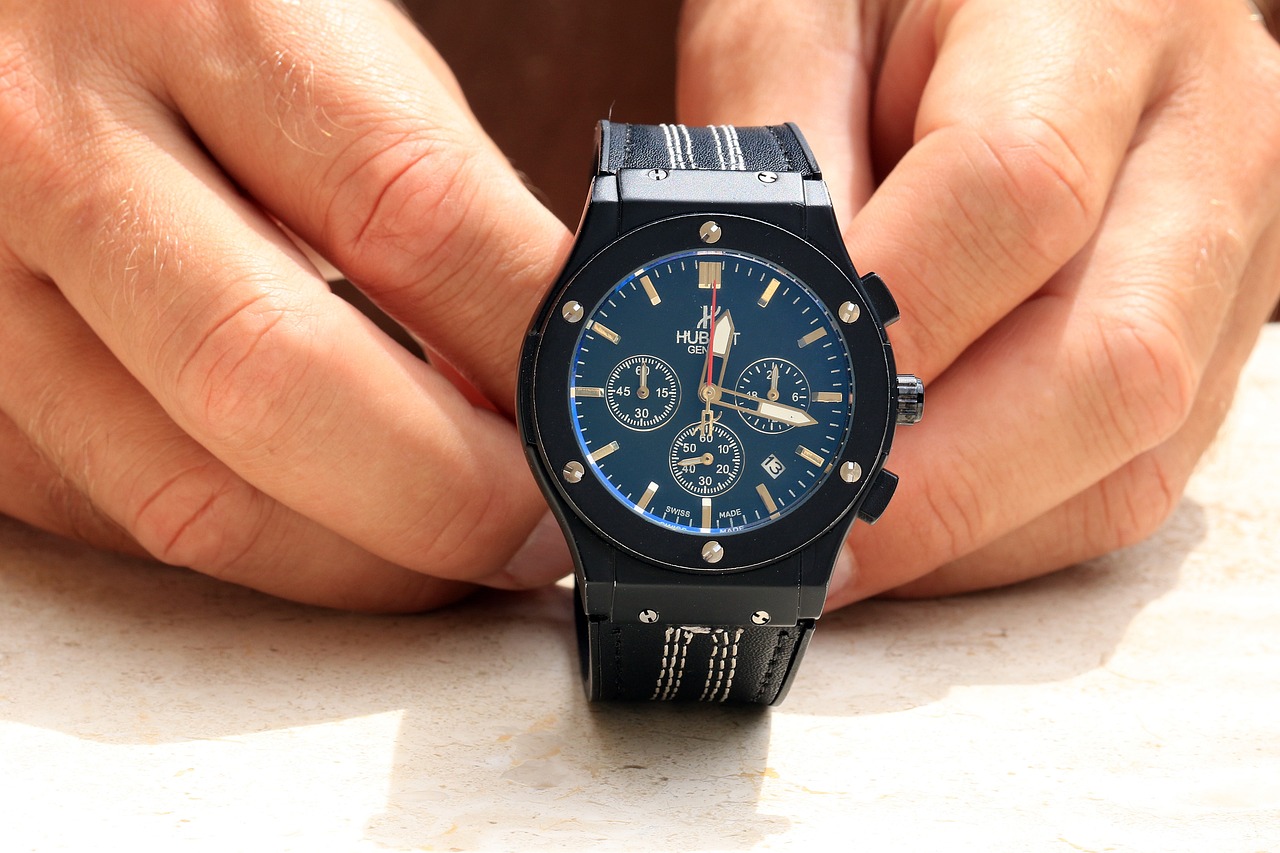This article explores the effects of water on different types of jewelry, providing insights into how to protect your valuables and maintain their beauty over time. Jewelry is often cherished for its aesthetic appeal and sentimental value, making it essential to understand how environmental factors, particularly water, can impact its condition.
What Types of Jewelry Are Most Affected by Water?
Understanding which materials are vulnerable to water damage is crucial for jewelry care. Some metals and gemstones react differently to moisture, impacting their longevity and appearance. Here are some common materials:
- Gold – Generally resistant, but gold-plated items can tarnish.
- Silver – Prone to tarnishing when exposed to moisture.
- Gemstones – Various stones have unique reactions to water.
How Does Water Damage Jewelry?
Water can cause various forms of damage, including tarnishing, rusting, and weakening. Each type of jewelry reacts differently, and understanding these effects can help you take preventive measures.
Effects on Precious Metals
Precious metals like gold and platinum are generally more resistant to water, but even they can suffer from damage under certain conditions. For instance, while pure gold resists tarnishing, gold-plated pieces may lose their finish with prolonged exposure to water.
Gold Jewelry and Water
While pure gold is resistant to tarnishing, gold-plated pieces can lose their finish when exposed to water. To maintain the integrity of gold jewelry, avoid wearing it while swimming or showering.
Silver Jewelry and Water
Sterling silver is particularly prone to tarnishing when exposed to moisture. Regular cleaning and appropriate storage can help prevent tarnish buildup. Consider using anti-tarnish pouches for added protection.
Effects on Gemstones
Different gemstones react uniquely to water exposure. For example, porous stones like turquoise and lapis lazuli can absorb moisture, leading to discoloration or damage. Always check for specific care instructions for your gemstones.
What Are the Signs of Water Damage in Jewelry?
Recognizing the signs of water damage early can help prevent further deterioration. Common indicators include:
- Tarnishing – Often seen as discoloration, particularly in silver.
- Loose Stones and Settings – Water exposure can loosen stones, requiring immediate attention.
How Can You Protect Your Jewelry from Water Damage?
Preventive measures are essential for maintaining the beauty and integrity of your jewelry. Here are some practical tips:
- Storage Tips – Store your jewelry in a dry place, ideally in a jewelry box or pouch that minimizes exposure to moisture.
- When to Remove Jewelry – Take off your jewelry before swimming, showering, or engaging in activities that may expose it to water.
What Should You Do If Your Jewelry Gets Wet?
If your jewelry does get wet, it’s important to act quickly. Here are immediate steps to take:
- Drying Techniques – Gently pat your jewelry dry with a soft cloth. Avoid using heat sources to dry your pieces.
- When to Seek Professional Help – If you notice significant damage or if stones appear loose, consult a jeweler for expert assistance.
Are There Any Myths About Water and Jewelry?
Myths surrounding water damage and jewelry can lead to confusion. Here are two common misconceptions:
- Myth: All Jewelry is Water-Resistant – Not all jewelry can withstand water exposure. Understanding the materials in your collection is crucial.
- Myth: Water Damage Is Always Visible – Some water damage may not be immediately apparent. Regular checks can help identify hidden issues.
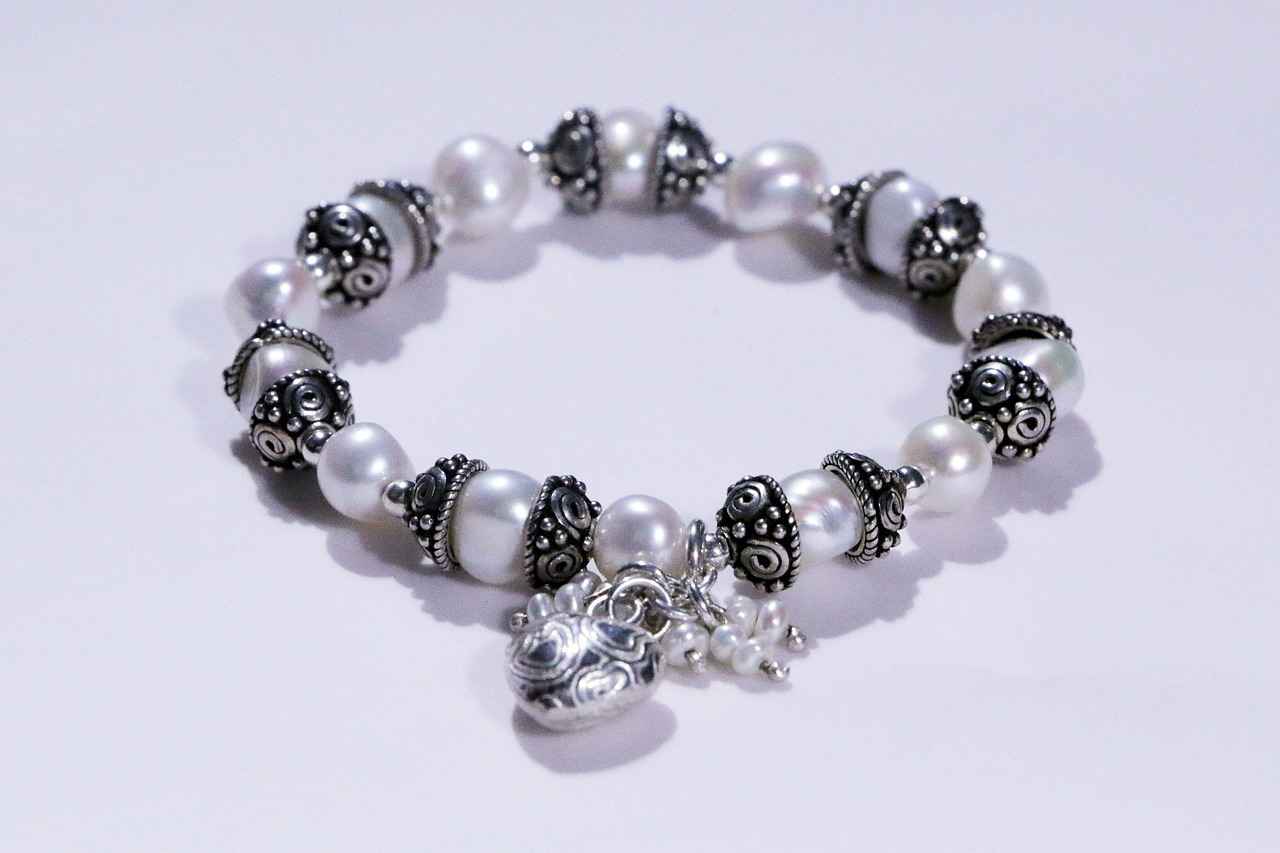
What Types of Jewelry Are Most Affected by Water?
When it comes to caring for your jewelry, understanding which materials are vulnerable to water damage is crucial. Different metals and gemstones react in various ways to moisture, which can significantly impact their longevity and appearance. This article will guide you through the types of jewelry most susceptible to water damage and how to protect them effectively.
Jewelry is often made from a variety of materials, each with its unique properties. Here’s a closer look at the types of jewelry that are most affected by moisture:
- Gold Jewelry: While pure gold is relatively resistant to tarnishing, gold-plated jewelry can be particularly vulnerable. The coating may wear off when exposed to water, leading to discoloration and damage.
- Silver Jewelry: Sterling silver is known for its beauty but is also prone to tarnishing when exposed to moisture. This tarnish can dull the shine of your pieces and requires regular maintenance to keep them looking their best.
- Gemstone Jewelry: Different gemstones react differently to water. For example, porous stones like turquoise and opal can absorb moisture, which may lead to discoloration or structural damage over time.
- Pearl Jewelry: Pearls are particularly sensitive to water. Excess moisture can cause them to lose their luster and may even lead to deterioration of the nacre.
- Costume Jewelry: Many costume jewelry pieces are made from base metals and synthetic stones that can corrode or discolor when exposed to water, making them less durable than fine jewelry.
Understanding these vulnerabilities is key to preserving your jewelry’s beauty and integrity. Here are some practical insights to help you protect your valuable pieces:
- Always remove jewelry before showering, swimming, or engaging in activities that may expose them to moisture.
- Store jewelry in a dry place, ideally in a jewelry box with anti-tarnish properties or silica gel packets to absorb humidity.
- Regularly clean your jewelry according to the specific material guidelines to prevent buildup of moisture and dirt.
By recognizing which materials are most affected by water damage, you can take the necessary precautions to ensure your jewelry remains in excellent condition for years to come. Remember, prevention is always better than cure!

How Does Water Damage Jewelry?
Water damage is a significant concern for jewelry owners, as it can lead to various forms of deterioration. Understanding how water interacts with different jewelry types is essential for maintaining their beauty and longevity. This section will explore the specific effects of water on a range of jewelry materials.
Water can cause a multitude of issues, including tarnishing, rusting, and weakening of materials. Each type of jewelry reacts differently to moisture, and it’s crucial to know how to protect your valuables.
While precious metals like gold and platinum are generally more resistant to water, they are not entirely immune. For instance, exposure to water can lead to:
- Corrosion: Although rare, certain conditions can cause corrosion in metals like silver.
- Loss of Luster: Prolonged exposure to moisture can dull the shine of metals.
Pure gold is known for its resistance to tarnishing; however, gold-plated items can suffer significantly when exposed to water. The coating can wear away, leading to:
- Color Fading: The underlying metal may become visible, ruining the aesthetic.
- Peeling: The gold layer can start to peel off, especially if exposed to harsh chemicals.
Sterling silver is particularly vulnerable to water damage. Its exposure to moisture can lead to:
- Tarnishing: This is a common issue, where silver develops a dark layer due to oxidation.
- Discoloration: Water can exacerbate the tarnishing process, leading to unsightly stains.
Different gemstones have unique reactions to water. Some can be damaged, while others are more resilient. Here are a few examples:
- Opals: These stones can absorb water, leading to cracks and structural damage.
- Emeralds: Often treated with oils, exposure to water can wash away these treatments, dulling their appearance.
Recognizing the signs of water damage early is crucial for preventing further deterioration. Common indicators include:
- Tarnishing: A visible darkening or discoloration on metals, especially silver.
- Loose Stones: Water exposure can lead to stones becoming loose in their settings, requiring immediate attention.
In summary, understanding how water affects different types of jewelry is essential for effective care. By recognizing the signs of damage and knowing how to protect your valuables, you can ensure their longevity and maintain their beauty over time.
Effects on Precious Metals
When it comes to jewelry, precious metals such as gold and platinum are often seen as the most durable and valuable options. However, even these metals are not entirely impervious to the effects of water. Understanding how water interacts with these materials is essential for maintaining the beauty and longevity of your cherished pieces.
Gold Jewelry and Water
Gold is renowned for its resistance to tarnishing, especially in its purest form (24k). However, gold-plated or gold-filled jewelry can be vulnerable to water exposure. When these items come into contact with moisture, the plating can wear away, leading to discoloration and loss of luster. To protect your gold jewelry, it is advisable to:
- Remove your jewelry before swimming or showering.
- Store gold pieces in a dry, cool place, preferably in a soft pouch or anti-tarnish cloth.
- Clean your gold jewelry regularly with a soft cloth to remove any moisture or residues.
Platinum Jewelry and Water
Platinum is another precious metal known for its durability and resistance to corrosion. However, it can still be affected by harsh chemicals found in soaps, lotions, and pool water. Over time, these substances can dull the surface of platinum jewelry. To ensure your platinum remains in top condition:
- Limit exposure to chemicals by removing jewelry during activities such as cleaning or swimming.
- Regularly polish your platinum pieces to maintain their shine.
- Have your platinum jewelry professionally cleaned once a year to remove any buildup.
Silver Jewelry and Water
Sterling silver, while beautiful, is particularly susceptible to tarnishing when exposed to moisture. This tarnish can appear as a dark film and can be accelerated by exposure to water, especially if it contains chlorine or salt. To combat tarnishing:
- Keep silver jewelry dry and store it in airtight containers.
- Use anti-tarnish strips or cloths in storage to absorb moisture.
- Clean tarnished silver with a silver polish or a mixture of baking soda and water.
How to Identify Water Damage
Recognizing the signs of water damage in precious metals is crucial for timely intervention. Look for:
- Tarnishing: A dull or darkened appearance, especially in silver.
- Loss of Luster: A decrease in shine, particularly in gold and platinum pieces.
- Loose Settings: Stones that are not securely set may indicate damage due to water exposure.
In conclusion, while precious metals like gold and platinum offer a level of resistance to water damage, they are not entirely immune. By taking proactive measures to protect your jewelry from moisture and understanding how to care for these valuable assets, you can ensure their beauty and longevity for years to come.
Gold Jewelry and Water
Gold jewelry is a timeless accessory that adds elegance and sophistication to any outfit. However, many people may not realize that while pure gold is highly resistant to tarnishing, its gold-plated counterparts can be significantly affected by exposure to water. This article will explore the effects of water on gold jewelry and provide essential tips for maintaining its integrity.
Gold jewelry comes in various forms, including pure gold (24k), 18k, and gold-plated items. The karat indicates the purity of gold, with higher karats containing a greater percentage of pure gold. While pure gold is known for its durability and resistance to corrosion, gold-plated jewelry is made by applying a thin layer of gold over a base metal, making it more vulnerable to damage.
When gold-plated items come into contact with water, the protective layer can erode, leading to a loss of shine and color. This is particularly true for pieces that are regularly exposed to moisture, such as rings or bracelets worn during activities like washing hands or swimming. Prolonged exposure can result in the base metal showing through, tarnishing the overall appearance of the jewelry.
- Avoid Water Exposure: Remove your gold jewelry before washing hands, swimming, or showering to prevent damage.
- Store Properly: Keep your jewelry in a dry, cool place, preferably in a soft pouch or a lined jewelry box to minimize exposure to moisture.
- Regular Cleaning: Clean your gold jewelry regularly using a soft cloth to remove dirt and oils that can accumulate over time.
- Limit Contact with Chemicals: Avoid exposing your jewelry to harsh chemicals found in cleaning products, perfumes, and lotions, as these can damage the gold finish.
Recognizing the signs of water damage early can help you take corrective measures. Look for:
- Tarnishing: A dull appearance or discoloration can indicate that the protective layer is wearing off.
- Peeling or Chipping: If you notice any areas where the gold is flaking or chipping away, this is a clear sign of water damage.
If your gold jewelry does get wet, it’s crucial to act quickly. Gently pat the piece dry with a soft cloth and avoid using heat sources, as they can cause further damage. If you notice any signs of tarnishing or damage, consider consulting a professional jeweler for advice on cleaning and restoration.
Maintaining the integrity of your gold jewelry requires diligence and care, especially when it comes to water exposure. By following the tips outlined above, you can help ensure that your gold pieces remain beautiful and last for years to come.
Silver Jewelry and Water
Silver jewelry is a beloved choice for many due to its beautiful shine and affordability. However, one of the significant challenges that silver jewelry faces is its susceptibility to tarnishing, particularly when exposed to moisture. Understanding how to care for silver jewelry, especially in relation to water exposure, is essential for maintaining its luster and ensuring its longevity.
Tarnishing occurs when silver reacts with sulfur compounds in the air, leading to a dull, discolored surface. Moisture accelerates this process, as it can create an environment conducive to tarnish formation. This is particularly true for sterling silver, which is composed of 92.5% silver and 7.5% other metals, often copper, that can also tarnish.
To keep your silver jewelry looking its best, consider the following strategies:
- Store Properly: Keep your silver jewelry in a cool, dry place. Use anti-tarnish pouches or cloths to minimize exposure to moisture and air.
- Avoid Water Exposure: Remove silver jewelry before washing hands, swimming, or engaging in activities that may expose it to moisture.
- Use Protective Coatings: Consider applying a thin layer of clear nail polish on the inner surfaces of rings to create a barrier between the silver and moisture.
If your silver jewelry does tarnish, don’t worry—there are effective methods to restore its shine:
- Gentle Cleaning: Use a soft cloth to gently buff the tarnished areas. For more stubborn tarnish, a silver polishing cloth can be very effective.
- Homemade Solutions: Create a paste using baking soda and water. Apply it to the tarnished areas, let it sit for a few minutes, and then rinse thoroughly.
- Professional Cleaning: If the tarnish persists or if you have intricate designs, consider taking your jewelry to a professional jeweler for a thorough cleaning.
Recognizing tarnish early can help you address it before it becomes more severe. Look for:
- Discoloration: A dull or yellowish film on the surface of the silver.
- Uneven Coloring: Areas that appear darker or have a greenish tint may indicate tarnish.
Maintaining the beauty of your silver jewelry requires awareness and proactive care, especially regarding moisture exposure. By implementing preventive measures and knowing how to treat tarnish effectively, you can enjoy your silver pieces for years to come, keeping them as stunning as the day you bought them.
Effects on Gemstones
When it comes to jewelry, gemstones are often the centerpiece, adding beauty and value. However, different gemstones react uniquely to water exposure, which can significantly impact their appearance and longevity. Understanding how moisture affects these precious stones is essential for any jewelry owner.
Some gemstones, such as diamond, are highly resistant to water damage. They can withstand exposure without suffering any adverse effects. However, others, like opal and turquoise, are much more sensitive to moisture. Prolonged exposure to water can lead to significant damage, including:
- Cracking: Opals are particularly susceptible to cracking when exposed to water, especially if they are not properly sealed.
- Color Fading: Stones like turquoise can lose their vibrant color when consistently wet, leading to a dull appearance.
- Surface Damage: Some softer stones may scratch or become dull when exposed to water and abrasive materials.
To protect your gemstones from potential water damage, consider the following precautions:
- Limit Exposure: Remove gemstone jewelry before activities that involve water, such as swimming, showering, or washing dishes.
- Proper Cleaning: When cleaning your gemstones, avoid submerging them in water. Instead, use a soft, damp cloth to gently wipe them down.
- Store Wisely: Keep gemstones in a dry environment, ideally in a fabric-lined jewelry box that protects them from moisture and humidity.
It’s also important to recognize the signs of water damage in your gemstones. Look for:
- Visible Cracks or Chips: Inspect your stones regularly for any signs of damage.
- Changes in Color: Notice any fading or dullness that may indicate moisture exposure.
- Loose Settings: Water exposure can sometimes loosen stones in their settings, so check for stability frequently.
In conclusion, being aware of how different gemstones react to water is vital for maintaining their beauty and integrity. By taking the necessary precautions and regularly checking your jewelry, you can ensure your gemstones remain stunning for years to come.

What Are the Signs of Water Damage in Jewelry?
Understanding the signs of water damage in jewelry is essential for every jewelry owner. Early detection can save your precious items from irreversible harm. Water can infiltrate various types of jewelry, leading to a range of issues that can diminish their beauty and value. In this section, we will explore the common indicators of water damage, allowing you to take prompt action and maintain your jewelry’s integrity.
Recognizing the signs of water damage early can help prevent further deterioration. Here are some common indicators that your jewelry may have been adversely affected by water:
- Tarnishing and Discoloration: One of the most visible signs of water damage, particularly in silver jewelry, is tarnishing. This occurs when moisture reacts with the metal, leading to a dull or discolored appearance. If you notice a cloudy or darkened surface on your silver pieces, it may be time to clean them to restore their shine.
- Loose Stones and Settings: Water exposure can weaken the adhesive that holds stones in place, resulting in loose stones or even stones falling out entirely. Check your jewelry regularly to ensure that stones are secure in their settings. If you detect any movement, it’s crucial to address this issue promptly to prevent loss.
- Rust Formation: For jewelry that includes metal components prone to rust, such as iron or certain alloys, water exposure can lead to rust formation. If you see rust spots on your jewelry, it’s a clear sign that moisture has caused damage and immediate action is required.
- Corrosion on Metal Parts: Some metals can corrode when exposed to water over time. If you notice any pitting or rough patches on your jewelry, this could indicate corrosion due to prolonged moisture exposure.
- Fading or Loss of Finish: Water can strip away the protective coatings on plated jewelry, leading to a faded appearance. If your gold-plated or silver-plated jewelry looks dull or has lost its luster, it may have been damaged by water.
Taking preventative measures can help protect your jewelry from water damage. Regular maintenance and careful observation are key to ensuring your pieces remain in excellent condition. If you suspect that your jewelry has suffered from water exposure, consider seeking professional cleaning and restoration services to address any damage effectively.
By understanding these signs of water damage, you can take proactive steps to protect your jewelry collection. Regular inspections and proper care will help preserve the beauty and longevity of your treasured items.
Tarnishing and Discoloration
are common issues faced by jewelry owners, especially when it comes to silver pieces. Understanding the causes and solutions for these problems can help you preserve the beauty of your jewelry for years to come. This section delves into the specifics of tarnishing, how to identify it, and effective methods for addressing discoloration in your treasured items.
Tarnishing occurs when metals react with moisture, air, and other environmental factors. For silver jewelry, exposure to sulfur in the air or in certain foods can accelerate this process. The presence of chlorine in swimming pools and cleaning products can also contribute to tarnishing. Understanding these factors is crucial for prevention.
- Color Change: The most noticeable sign of tarnishing is a dull or discolored surface. Silver may appear yellowish or brownish rather than its usual shiny finish.
- Texture Alteration: You may notice a rough texture on the surface of the jewelry, indicating that tarnishing has begun to set in.
- Stains: Dark spots or streaks can form, which are clear indicators of tarnish.
If you discover tarnishing on your silver jewelry, don’t despair. There are several effective methods for restoring its shine:
- Use a Silver Polishing Cloth: These specially treated cloths can effectively remove tarnish without scratching the metal.
- Baking Soda Paste: Mix baking soda with water to create a paste. Apply it gently with a soft cloth, then rinse thoroughly.
- Commercial Silver Cleaners: For heavily tarnished pieces, consider using a commercial silver cleaner specifically designed for jewelry.
Taking preventive measures can help keep your jewelry looking its best. Here are some tips:
- Store Properly: Keep your silver jewelry in a dry, cool place. Consider using anti-tarnish pouches or cloths for added protection.
- Avoid Moisture: Remove your jewelry before swimming, showering, or engaging in activities that may expose it to water.
- Regular Cleaning: Make it a habit to clean your jewelry regularly to prevent tarnish buildup.
If tarnishing persists despite your efforts, or if you’re dealing with intricate pieces, it may be wise to consult a professional jeweler. They can provide specialized cleaning and restoration services, ensuring your jewelry is handled with care.
By understanding the causes of tarnishing and implementing effective cleaning and preventive strategies, you can maintain the beauty of your silver jewelry. Regular attention to your pieces will not only enhance their appearance but also extend their lifespan, allowing you to enjoy them for many years to come.
Loose Stones and Settings
Loose stones in jewelry settings can be a significant concern for any jewelry owner. Water exposure is one of the factors that can lead to this issue, causing stones to become dislodged or lose their secure fit. In this section, we will discuss how to check for stability in your jewelry and what steps to take if you notice any problems.
Regular maintenance is key to ensuring your jewelry remains in top condition. Here are some simple steps to help you check for loose stones:
- Visual Inspection: Start by examining your jewelry closely. Look for any stones that appear misaligned or shifted from their original position.
- Gentle Tapping Test: Lightly tap the stones with your fingernail. If you hear a dull sound or feel movement, the stone may be loose.
- Movement Check: Gently press on the stone with your fingers. If it moves or shifts easily, it’s a sign that it may need repair.
If you discover that a stone is loose, it’s important to act quickly to prevent further damage:
- Stop Wearing the Jewelry: Remove the piece immediately to avoid losing the stone altogether.
- Secure the Stone: If you have access to a jeweler’s tool, you can try to gently push the stone back into place. However, this is only a temporary fix.
- Consult a Professional: The best course of action is to take your jewelry to a professional jeweler. They can properly secure the stone and check for any other potential issues.
To minimize the risk of stones becoming loose in their settings, consider the following preventative measures:
- Avoid Water Exposure: As mentioned, water can weaken settings over time. Remove your jewelry before washing hands, swimming, or engaging in any water-related activities.
- Regular Maintenance: Schedule regular check-ups with a jeweler. They can inspect your jewelry for loose stones and other potential issues.
- Proper Storage: Store your jewelry in a dry, safe place, away from moisture and humidity. Consider using anti-tarnish pouches or silica gel packs to absorb excess moisture.
By taking these steps, you can significantly reduce the risk of loose stones and ensure that your jewelry remains beautiful and intact for years to come.

How Can You Protect Your Jewelry from Water Damage?
Jewelry is often cherished for its beauty and sentimental value, making it essential to protect these treasures from potential damage. Water exposure can be one of the most significant threats to your jewelry, leading to tarnishing, discoloration, and even structural damage. In this section, we will explore effective strategies to safeguard your jewelry from water damage and maintain its stunning appearance.
Water can have varying effects on different types of materials used in jewelry. While some metals are more resistant to moisture, others can suffer severe damage. Understanding the risks associated with water exposure is crucial in taking preventive measures.
- Remove Jewelry Before Activities: Always take off your jewelry before engaging in activities that involve water, such as swimming, showering, or washing dishes. This simple habit can significantly reduce the risk of exposure.
- Store Jewelry Properly: Invest in a jewelry box or organizer that keeps pieces separated and dry. Use anti-tarnish pouches or silica gel packets to absorb moisture and prevent tarnishing.
- Avoid Wearing Jewelry in Humid Conditions: High humidity can lead to condensation on your jewelry, especially for pieces made of silver or those with porous gemstones. If you live in a humid area, consider storing your jewelry in a climate-controlled environment.
- Be Cautious with Cleaning Products: When cleaning your home or using personal care products, remove your jewelry. Many cleaning agents and cosmetics can contain chemicals that may damage your pieces.
- Regular Maintenance: Schedule regular checks with a jeweler to inspect your jewelry for any signs of wear, loose stones, or damage. Early detection can prevent more extensive repairs later.
Accidents happen, and if your jewelry does get wet, acting quickly can minimize damage. Here are the steps you should take:
- Dry Immediately: Gently pat the jewelry dry with a soft cloth. Avoid rubbing, as this can cause scratches or further damage.
- Air Dry: After patting dry, let your jewelry air dry completely. Place it in a dry area away from direct sunlight or heat sources, which can warp or damage certain materials.
- Inspect for Damage: Once dry, carefully inspect your jewelry for any signs of damage, such as tarnishing or loose stones. If you notice any issues, consult a professional jeweler for advice.
If your jewelry has been significantly exposed to water or shows signs of damage, it may be time to seek professional help. A jeweler can provide thorough cleaning and repair services to restore your pieces to their original beauty.
Protecting your jewelry from water damage is vital to preserving its beauty and integrity. By following these practical tips and understanding the risks associated with water exposure, you can enjoy your cherished pieces for years to come. Remember, a little caution goes a long way in ensuring the longevity of your jewelry.
Storage Tips for Jewelry
Proper storage is essential for minimizing the risks of water damage to your jewelry. By taking the right precautions, you can ensure that your precious pieces remain intact and beautiful over time. Below are some effective storage tips you can implement to protect your jewelry from moisture and humidity.
The environment in which you store your jewelry plays a critical role in its preservation. Aim for a cool, dry place with stable temperatures. Avoid areas that experience high humidity, such as bathrooms or kitchens. Instead, consider storing your jewelry in a bedroom or a designated jewelry box placed in a climate-controlled room.
Investing in anti-tarnish pouches or cloths can significantly extend the life of your jewelry. These materials are designed to absorb moisture and prevent tarnishing, especially for metals like silver. Consider placing your jewelry in these protective pouches before storing them in a box or drawer.
When storing multiple pieces of jewelry, it’s crucial to keep them separate to avoid scratches and tangling. Use compartments or dividers in your jewelry box. For necklaces, consider using hooks or a hanging organizer to prevent them from knotting.
If you have the original packaging for your jewelry, such as boxes or pouches, use them for storage. These containers are often designed to protect your jewelry from environmental factors, including moisture. Additionally, they can help keep pieces organized.
Make it a habit to periodically check your jewelry for any signs of damage or tarnish. This proactive approach can help you catch any issues early. If you notice any moisture buildup or discoloration, take steps to address the problem immediately.
For those with a significant collection or valuable pieces, investing in a jewelry safe can provide added security against both moisture and theft. Look for a safe that offers climate control features to maintain an optimal environment for your jewelry.
Including silica gel packs in your jewelry storage can help absorb excess moisture. These packs are commonly found in shoeboxes and other packaging and can be easily placed in your jewelry box to keep the environment dry.
While plastic containers may seem convenient, they can trap moisture, leading to tarnishing and damage. Instead, opt for wooden or fabric-lined boxes that allow for proper air circulation.
Finally, consider the activities you engage in while wearing your jewelry. When swimming, showering, or exercising, it’s best to remove your pieces to prevent exposure to water and sweat. By being mindful of when you wear your jewelry, you can significantly reduce the risk of damage.
By following these storage tips, you can protect your jewelry from moisture and humidity, ensuring that your pieces remain stunning for years to come. Remember, proper care and storage are key to maintaining the beauty and integrity of your cherished items.
When to Remove Jewelry
Understanding when to remove your jewelry is essential for preserving its beauty and longevity. Water exposure can lead to various forms of damage, including tarnishing, rusting, and weakening of materials. By following some simple guidelines, you can ensure that your cherished pieces remain in excellent condition.
Jewelry can be delicate, and exposure to water can cause irreversible damage. This section highlights the importance of being proactive in jewelry care.
- Protecting Precious Metals: Even metals like gold and platinum can suffer from damage when exposed to certain conditions. For example, gold-plated items can lose their luster when wet.
- Preserving Gemstones: Many gemstones are sensitive to water, which can dull their shine or even cause them to crack. Understanding the specific needs of your stones is crucial.
Knowing when to take off your jewelry can prevent water damage. Below are some activities that warrant the removal of your pieces:
- Swimming: Whether in a pool, ocean, or hot tub, chlorine and saltwater can harm jewelry. Always remove your pieces before diving in.
- Showering: The steam and water from showers can lead to tarnishing, especially for silver jewelry. It’s best to leave your jewelry off during bath time.
- Exercising: Sweat can cause moisture buildup and may lead to tarnishing or damage to certain materials. Consider removing your jewelry before hitting the gym.
- Cleaning: Household cleaners can contain harsh chemicals that can damage your jewelry. Always take off your pieces when doing chores.
- Cooking: Water splashes and food particles can tarnish or stain your jewelry. It’s advisable to remove your items before preparing meals.
When you do decide to remove your jewelry, proper storage is key to maintaining its condition. Here are some tips:
- Use Soft Pouches: Store your jewelry in soft pouches or lined boxes to prevent scratches and tangling.
- Avoid Humid Areas: Keep your jewelry in a cool, dry place to minimize moisture exposure.
- Separate Pieces: Store different types of jewelry separately to avoid reactions between metals and gemstones.
If you inadvertently expose your jewelry to water, it’s crucial to act quickly. Here are some immediate steps to mitigate damage:
- Dry Gently: Use a soft, lint-free cloth to gently dry your jewelry. Avoid rubbing, as this can cause scratches.
- Inspect for Damage: Check for any signs of tarnishing or loose stones. If you notice any issues, consider consulting a professional jeweler.
By being mindful of when to remove your jewelry and following these guidelines, you can significantly reduce the risk of water damage. Remember, a little precaution goes a long way in keeping your jewelry looking its best.

What Should You Do If Your Jewelry Gets Wet?
If your jewelry gets wet, it can be a source of concern. However, acting quickly can significantly reduce the risk of damage. This section will guide you through the immediate steps to take when your precious items encounter moisture.
- Remove the Jewelry: The first step is to carefully remove the jewelry from your body. This is crucial to prevent any further exposure to moisture.
- Dry the Jewelry: Use a soft, lint-free cloth to gently pat the jewelry dry. Be cautious not to rub, as this could scratch the surface.
- Air Dry: After patting it dry, place the jewelry in a well-ventilated area to air dry completely. Avoid direct sunlight or heat sources, as they can cause further damage.
Different types of jewelry require specific care to mitigate water damage:
- Gold Jewelry: Generally resistant to water, but if it’s gold-plated, it’s essential to dry it thoroughly to prevent the plating from peeling.
- Silver Jewelry: Sterling silver is prone to tarnishing. After drying, consider applying a silver polish to restore its shine.
- Gemstone Jewelry: For pieces with porous stones like turquoise or opal, ensure they are dried gently to avoid any internal damage.
If your jewelry has been exposed to a significant amount of water or if you notice any signs of damage, it’s advisable to consult a professional jeweler. They can provide expert cleaning and repair services that can restore your jewelry to its original condition.
- Tarnishing: Look for any discoloration, especially in silver pieces.
- Loose Stones: Check if any stones have become loose in their settings, which can indicate damage.
- Rust: For metal components, rust can be a sign of prolonged moisture exposure.
To avoid water damage in the future, consider the following tips:
- Remove Jewelry Before Activities: Always take off your jewelry before swimming, showering, or engaging in activities where it may get wet.
- Store Properly: Keep your jewelry in a dry, cool place, preferably in a jewelry box or pouch that protects it from moisture.
- Regular Maintenance: Schedule regular check-ups with a jeweler to ensure your jewelry is in good condition.
By taking immediate action and following these guidelines, you can significantly reduce the risk of water damage to your beloved jewelry. Remember, when in doubt, consulting a professional is always the best course of action.
Drying Techniques
When it comes to jewelry care, understanding proper drying techniques is essential to prevent damage. Water exposure can lead to tarnishing, rust, and even structural issues, particularly for delicate pieces. In this section, we will explore the best methods for drying different types of jewelry safely and effectively.
Jewelry can be made from various materials, each with its own level of sensitivity to moisture. Proper drying techniques not only preserve the aesthetic appeal of your jewelry but also extend its lifespan. Here are some key reasons why you should prioritize effective drying:
- Prevents Tarnishing: Moisture can lead to tarnishing, especially in metals like silver.
- Avoids Rust: Certain metals, such as iron or steel, can rust if not dried properly.
- Maintains Stone Integrity: Some gemstones can be damaged by prolonged exposure to water.
For metal jewelry, such as gold or silver, the following steps are recommended:
- Gently Pat Dry: Use a soft, lint-free cloth to gently pat the jewelry dry. Avoid rubbing, as this can scratch the surface.
- Air Dry: Place the jewelry on a clean, dry surface and allow it to air dry completely. Ensure it’s in a well-ventilated area.
Gemstones require special care when drying:
- Use a Soft Cloth: Similar to metal jewelry, use a soft cloth to carefully dry the stones.
- Avoid Heat Sources: Never use a hairdryer or heater to speed up the drying process, as excessive heat can damage some stones.
Pearls and other delicate materials need extra caution:
- Air Dry Only: Always let pearls air dry naturally to prevent damage.
- Keep Away from Moisture: Store pearls in a dry place to avoid future exposure to moisture.
While drying jewelry may seem straightforward, there are common pitfalls to be aware of:
- Using Harsh Chemicals: Avoid using cleaning agents that may leave residues or damage the jewelry.
- Skipping the Drying Process: Never leave wet jewelry to dry on its own without proper care, as this can lead to long-term damage.
If you notice any signs of water damage, such as discoloration or loose stones, it may be time to consult a professional jeweler. They can provide specialized cleaning and repair services to restore your jewelry to its original condition.
By following these best practices for drying jewelry, you can significantly reduce the risk of water damage and keep your precious pieces looking their best. Remember, taking the time to dry your jewelry properly is an investment in its longevity and beauty.
When to Seek Professional Help
Jewelry is not just an accessory; it often holds significant emotional and monetary value. However, exposure to water can lead to various forms of damage that may compromise its integrity. In some cases, professional cleaning and repair may be necessary to restore your jewelry to its former glory. This section discusses when it is crucial to consult a jeweler for expert assistance.
Recognizing the right moment to seek professional help can save your jewelry from irreversible damage. Here are some key situations where expert assistance is essential:
- Persistent Tarnishing: If your silver jewelry continues to tarnish despite regular cleaning, it may require specialized treatment. A jeweler can apply professional-grade cleaning solutions that are more effective than typical home remedies.
- Loose Stones: If you notice any stones becoming loose in their settings, do not hesitate to visit a jeweler. Loose stones can easily fall out and be lost, and a professional can secure them properly.
- Signs of Rust or Corrosion: For metal jewelry, especially those made from less durable materials, rust or corrosion can indicate serious damage. A jeweler can assess the extent of the damage and recommend appropriate repairs.
- Water Damage: If your jewelry has been exposed to water and shows signs of discoloration or other damage, it is advisable to consult a professional. They can provide the necessary cleaning and restoration services.
- Complex Repairs: Some repairs, such as resizing rings or soldering broken chains, require specialized tools and expertise. Attempting these repairs at home can lead to further damage, making it essential to seek a jeweler’s help.
When you take your jewelry to a professional, you can expect a thorough evaluation. The jeweler will examine the piece for any signs of damage and discuss your concerns. Based on their assessment, they may recommend:
- Cleaning Services: This may include ultrasonic cleaning or steam cleaning, which are effective for removing dirt and grime without damaging the jewelry.
- Repairs: Depending on the condition of your jewelry, repairs can range from simple tightening of settings to complete restoration of intricate pieces.
- Maintenance Advice: A good jeweler will not only fix your jewelry but also provide tips on how to care for it in the future, helping you to avoid similar issues.
Consulting a jeweler is not just about fixing problems; it is about preserving the value and beauty of your jewelry. Professional services ensure:
- Quality Assurance: Jewelers use high-quality materials and techniques that are often unavailable to the average consumer.
- Preventing Further Damage: Timely intervention can prevent minor issues from escalating into major problems, saving you both time and money in the long run.
- Expert Knowledge: Jewelers possess the expertise needed to handle various materials and designs, ensuring that your jewelry is treated appropriately.
In conclusion, while DIY solutions may be tempting, they can often lead to more significant issues. When in doubt, it’s best to consult a professional jeweler who can provide the necessary expertise and care for your precious pieces. Remember, your jewelry deserves the best treatment possible to maintain its beauty and value.
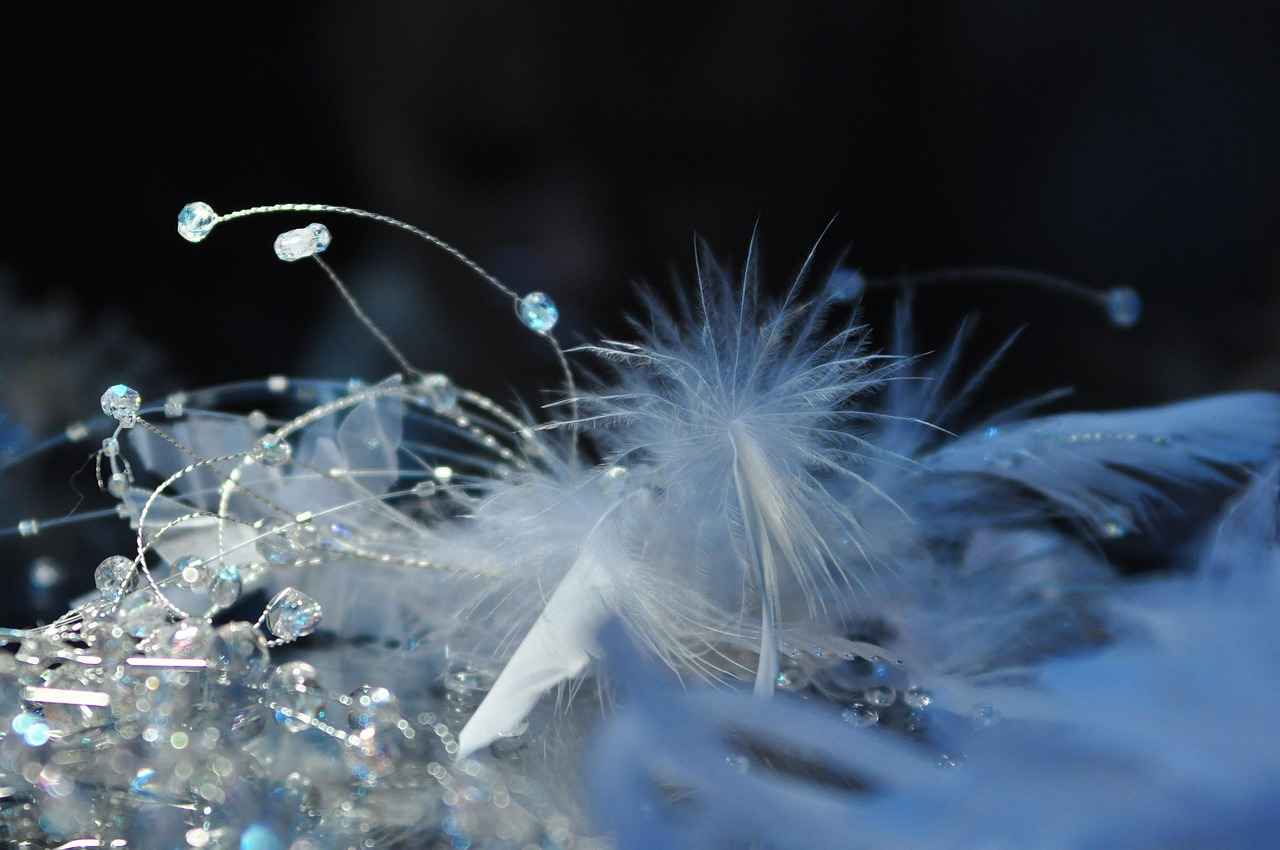
Are There Any Myths About Water and Jewelry?
Understanding the relationship between water and jewelry is essential for maintaining the beauty and integrity of your precious pieces. Unfortunately, myths surrounding water damage and jewelry can lead to confusion and misinformed decisions. This section aims to debunk common misconceptions and clarify the facts, ensuring you have the knowledge necessary to care for your jewelry properly.
- Myth: All Jewelry is Water-Resistant
- Myth: Water Damage Is Always Visible
- Myth: Jewelry Can Be Easily Cleaned After Getting Wet
- Myth: Wearing Jewelry While Swimming Is Safe
- Myth: You Can’t Repair Water-Damaged Jewelry
One of the most prevalent myths is that all jewelry can withstand exposure to water. In reality, the water resistance of jewelry varies significantly depending on the materials used. For instance, while gold and platinum are relatively resistant to tarnishing, other materials like sterling silver are highly susceptible to moisture damage. Additionally, some gemstones can absorb water, leading to potential damage. It’s crucial to know the specific care requirements for each piece in your collection.
Another common misconception is that all water damage is immediately apparent. In truth, some forms of damage can occur beneath the surface, often going unnoticed until it becomes severe. For example, moisture can cause rust or tarnish that may not be visible at first glance. Regular inspections and proper maintenance can help you catch these issues early and prevent further deterioration.
Many people believe that simply drying their jewelry after exposure to water is sufficient to prevent damage. However, this is not always the case. Depending on the type of jewelry and the extent of water exposure, thorough cleaning and drying techniques may be necessary. For example, gold-plated items may require gentle cleaning to prevent the finish from wearing off, while silver items may need specific treatments to address tarnishing.
Some individuals think it’s safe to wear their jewelry while swimming in pools or oceans. However, chlorine and saltwater can be particularly damaging to many types of metals and gemstones. It’s advisable to remove your jewelry before swimming to avoid any potential harm.
Lastly, many people assume that once jewelry has been damaged by water, it cannot be repaired. This is far from the truth. While some damage may be irreversible, many issues can be addressed by professional jewelers. Whether it’s re-setting a loose stone or restoring tarnished metal, seeking expert help can often bring your jewelry back to its former glory.
In conclusion, being aware of these common myths can significantly impact how you care for your jewelry. By understanding the facts, you can take the necessary precautions to protect your valuable pieces from water damage.
Myth: All Jewelry is Water-Resistant
Many people believe that all jewelry can withstand exposure to water without any repercussions. This misconception can lead to significant damage to treasured pieces, resulting in costly repairs or even permanent loss. Understanding the truth behind this myth is essential for anyone who values their jewelry collection.
The notion that all jewelry is water-resistant is misleading because it overlooks the diverse materials used in jewelry making. Different metals and gemstones react to water in varied ways. For instance, while gold and platinum are generally more resistant to tarnishing, other materials, such as sterling silver, can suffer from tarnish and corrosion when exposed to moisture.
- Gold-Plated Jewelry: Gold plating can wear off when exposed to water, leading to a dull appearance.
- Sterling Silver: This metal is particularly susceptible to tarnishing, especially in humid conditions.
- Costume Jewelry: Often made from base metals and synthetic stones, these pieces can corrode or lose their finish when wet.
- Gemstones: Certain stones, like opals and pearls, can absorb water, leading to damage over time.
Water can cause several forms of damage to jewelry:
- Tarnishing: This is especially common with silver jewelry, which can tarnish quickly when exposed to moisture.
- Rusting: Base metals may rust when exposed to water, particularly if they are not coated or treated.
- Weakening Settings: Water can loosen the settings of stones, causing them to become dislodged.
Recognizing the signs of water damage can help you take action before the damage becomes irreversible. Look for:
- Tarnishing: A dull or discolored appearance, particularly in silver pieces.
- Loose Stones: Check for any stones that may feel loose in their settings.
To keep your jewelry safe from water damage, consider the following tips:
- Storage: Store your jewelry in a dry place, ideally in anti-tarnish pouches or boxes.
- When to Remove: Take off your jewelry before swimming, showering, or engaging in any activities that may expose it to moisture.
If your jewelry does get wet, act quickly:
- Dry Immediately: Use a soft, dry cloth to gently wipe away moisture.
- Inspect for Damage: Check for any signs of tarnishing or loose stones.
- Seek Professional Help: If you’re unsure about the condition of your jewelry, consult a professional jeweler for advice.
In conclusion, it is crucial to understand that not all jewelry is water-resistant. By recognizing the materials used in your pieces and taking preventative measures, you can ensure that your jewelry remains beautiful and intact for years to come.
Myth: Water Damage Is Always Visible
When it comes to jewelry care, one common misconception is that all water damage is immediately visible. In reality, some water damage may occur without any obvious signs, making it crucial for jewelry owners to be vigilant. This section explores how hidden damage can manifest and what specific indicators to look for in your jewelry.
Water can infiltrate the crevices of jewelry, especially in settings where stones are mounted. This can lead to corrosion or deterioration that isn’t visible on the surface. For instance, while you may notice tarnishing on silver, the underlying metal could be suffering from unseen damage. Here are some common ways hidden water damage can occur:
- Moisture Trapped in Settings: Water can become trapped under gemstones or in the joints of metal pieces, leading to gradual erosion.
- Rust Formation: For jewelry that contains iron or steel components, moisture can cause rust to develop, which may not be visible until it has progressed significantly.
- Weakening of Metal Structures: Prolonged exposure to water can weaken the integrity of delicate chains or clasps, making them more prone to breakage.
To protect your jewelry from long-term damage, it’s essential to recognize the signs of potential water-related issues:
- Discoloration: If you notice any changes in color, especially in metals like silver, it could be a sign of tarnishing caused by moisture.
- Loose Stones: If a stone feels wobbly or you can see gaps in the setting, water may have eroded the adhesive or metal holding it in place.
- Unusual Odors: A musty smell emanating from your jewelry box could indicate moisture buildup, which can lead to damage.
To avoid hidden water damage, consider the following preventive measures:
- Regular Inspections: Periodically check your jewelry for any signs of wear and tear, focusing on settings and clasps.
- Avoid Water Exposure: Remove jewelry before showering, swimming, or engaging in activities that may expose it to moisture.
- Proper Storage: Store your jewelry in a dry, cool place, preferably in individual pouches or boxes to minimize contact with moisture.
If you suspect that your jewelry has been affected by hidden water damage, take immediate action:
- Dry Thoroughly: Gently dry your jewelry with a soft cloth to remove any surface moisture.
- Consult a Professional: If you notice any signs of damage, consider taking your jewelry to a jeweler for a thorough inspection and potential restoration.
In conclusion, while some water damage may not be visible at first glance, being proactive in monitoring your jewelry can save you from costly repairs in the future. By understanding the risks and recognizing the signs of hidden damage, you can better protect your treasured pieces.
Frequently Asked Questions
- Can water damage gold jewelry?
Yes, while pure gold is resistant to tarnishing, gold-plated jewelry can lose its finish when exposed to water. It’s important to keep these pieces dry to maintain their appearance.
- What should I do if my silver jewelry gets wet?
If your sterling silver jewelry gets wet, dry it immediately with a soft cloth to prevent tarnishing. Regular cleaning and proper storage can also help minimize moisture damage.
- Are all gemstones affected by water?
No, different gemstones react differently to water. Some, like opals, can be particularly vulnerable, while others may be more resilient. It’s essential to know how your specific stones react to moisture.
- How can I prevent water damage to my jewelry?
To protect your jewelry, store it in a dry place, avoid wearing it during activities that involve water, and regularly check for any signs of damage or wear.
- What are the signs of water damage in jewelry?
Common signs include tarnishing, discoloration, and loose stones in settings. If you notice any of these, it’s best to address them quickly to prevent further damage.
- When should I seek professional help for my jewelry?
If your jewelry has sustained significant water damage or if you’re unsure how to clean or repair it, it’s wise to consult a professional jeweler for expert assistance.
